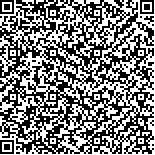| 本文已被:浏览次 下载次 |

码上扫一扫! |
|
|
|
| Mechanism analysis of pull-up and quick release technique during casing running process |
|
HUANG Genlu1, LI Wei1, NI Hongjian2, MENG Xiangwei1, YU Fan1, WANG Shuchao1
|
|
(1.School of Petroleum Engineering in China University of Petroleum, Qingdao 266580, China;2.Institute of Unconventional Hydrocarbon and New Energy Sources in China University of Petroleum,Qingdao 266580, China)
|
| Abstract: |
| In order to solve a suck-up problem during casing running process in well completion, the most frequently used and accessible method is the pull-up and then quick release technique. However, its application is mainly based on experience, and lack of mechanism analysis and theoretical guidance. In essence, the motion of the casing string in a section of horizontal well after a pull-up and then quick release is similar to that in an actual wellbore, and thus an analysis model for the mechanism of casing running during the pull-up then release process was established, and corresponding programs were coded. The influences of many factors on the trip-in ability of the casing have been analyzed, including the casing length, friction coefficient, axial pressure, dimensionless tensile force and different release ways. The results indicate that casing running during the pull-up and then release can make use of the stress wave produced in the process to reduce friction, which can push the casing to move forward even though the original axial compression force is less than the total friction. The length of the casing and the friction coefficient are negatively correlated to the axial movement of the casing, while the axial pressure and dimensionless tensile force are positively correlated to the axial displacement during the pull-up and then release process. Meanwhile, the axial movement of the casing in a rapid release process is much larger than that in a slow release process. |
| Key words: casing running pull-up and then release method friction stress wave influence factors |
|
|